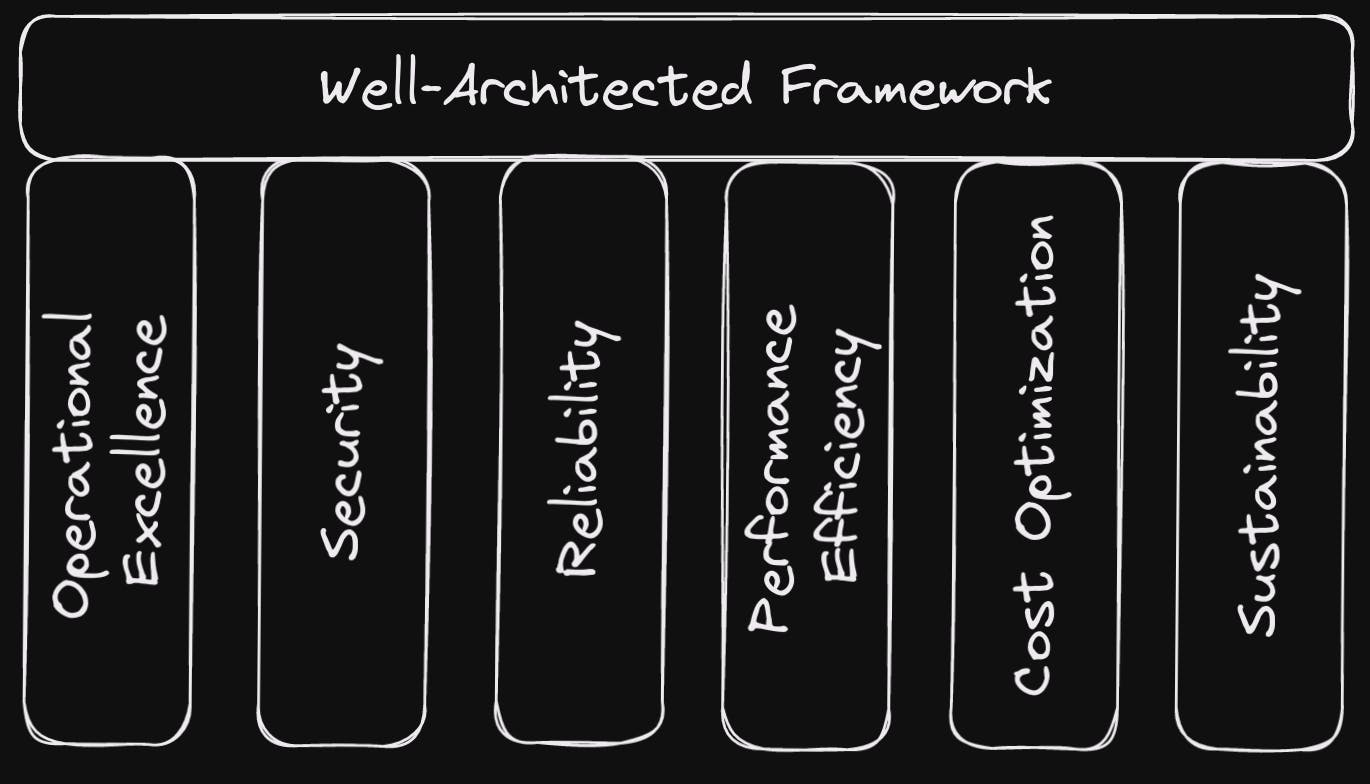AWS Well-Architected Framework

Well-Architecture Framework is a set of concepts, design principles, recommendations and best practices for designing and operating workloads in a cloud environment. It allows for a consistent approach to evaluating cloud architectures and ensures scalable designs are implemented. While each cloud vendor has their take on the Framework, in general, the Frameworks are cloud agnostic and be applied to any Cloud environment and vendor. We will focus on AWS Framework but all providers should have a similar version.
The aim of the Well-Architected Framework isn't to specify a specific solution but a general process that allows you to develop a solution that fits your needs and criteria.
AWS's Framework has 6 pillars
Operational Excellence
Security
Reliability
Performance Efficiency
Cost Optimization
Sustainability
Operational Excellence
The operational excellence pillar focuses on running and monitoring systems, and continually improving processes and procedures. Key topics include automating changes, responding to events, and defining standards to manage daily operations.
The goal of operational excellence is the ability to support the development and run workload effectively, gain insights into operations and continuously improve and support processes and procedures.
Perform operations as code
Annotated documentation
Make small frequent and reversible changes
Frequently refine operation procedures
Anticipate failure and learn from them
Security
The security pillar focuses on protecting information and systems. Key topics include confidentiality and integrity of data, managing user permissions, and establishing controls to detect security events.
Implement a strong identity foundation
Enable traceability
Apply security at all layers
Automate security best practices
Protect data in transit and at rest
Keep people away from data
Prepare for security events
Reliability
The reliability pillar focuses on workloads performing their intended functions correctly and consistently and the ability to recover quickly from failure to meet demands. Key topics include distributed system design, recovery planning, and adapting to changing requirements.
Automatically recover from failure
Test recovery procedures
Scale horizontally to increase aggregate system availability
Stop guessing capacity
Manage change in automation
Performance Efficiency
The performance efficiency pillar focuses on the structured and streamlined allocation of IT and computing resources to meet system requirements efficiently. Key topics include selecting resource types and sizes optimized for workload requirements, monitoring performance, and maintaining efficiency as business needs evolve.
Democratize advance technologies
Go global in minutes
Use serverless architectures
Experiment more often
Mechanical sympathy
Cost Optimization
The cost optimization pillar focuses on avoiding unnecessary costs. Key topics include understanding spending over time and controlling fund allocation, selecting resources of the right type and quantity, and scaling to meet business needs without overspending.
Adopt a consumption model
Measure overall efficiency
Stop spending money on data centre operations
Analyze and attribute expenditure
Use managed services to reduce the cost of ownership
Sustainability
The sustainability pillar focuses on minimizing the environmental impacts of running cloud workloads. Key topics include a shared responsibility model for sustainability, understanding impact, and maximizing utilization to minimize required resources and reduce downstream impacts.
Understand your impact
Establish sustainability goals
Maximize utilization
Anticipate and adopt new and more efficient hardware and software offerings
Use managed services
Reduce the downstream impact of your cloud workloads
Purpose of the Framework
The purpose of the framework isn't just to ensure your cloud solution works. It's to ensure that the solution is effective, efficient and secure. The framework aims to ensure an understanding when making decisions to ensure that the pros and cons are considered against best practices and identify areas for improvement.